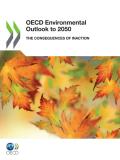This publication offers a general introduction to sustainability impact assessment, which is an approach for exploring the combined economic, environmental and social impacts of a range of proposed policies, programmes, strategies and action plans. Such assessments can also assist decision-making and strategic planning throughout the entire policy cycles. It is not an in-depth or detailed user manual, but rather outlines basic principles and process steps of sustainability impact assessments, drawing on examples from Switzerland, Belgium and the European Commission, among others. This publication is a valuable source of information for policy makers on sustainability impact assessments.
This publication (the 10th edition of Greenhouse Gas Market) brings together carbon market professionals, policymakers, academics and NGOs to provide in-depth analysis and perspective on the main issues affecting carbon policy worldwide. IETA is global in its outreach and the publication features latest developments in current and emerging carbon markets, as well as taking a step back to consider the wider implications of climate policy design and implementation.

Based on joint modelling by the OECD and the Netherlands Environmental Assessment Agency (PBL), this document looks forward to the year 2050 to find out what demographic and economic trends might mean for the environment if the world does not adopt more ambitious green policies. It also looks at what policies could change that picture for the better. This Outlook focuses on four areas: climate change, biodiversity, freshwater and health impacts of pollution, identified as 'red light' issues by the previous 'Environmental Outlook to 2030' publication. This summary was prepared by Eldis.
Nepal is undergoing two momentous transformations-from a rural to an urbanizing economy and from a unitary to a federal state. This book aims at understanding the first of these two transitions: Nepal's journey toward becoming a predominantly urban economy. The study carries out an initial assessment of Nepal's transition from a predominantly rural to an urbanizing economy. This assessment aims at strengthening our understanding of the demographic and economic dimensions of the transition, and exploring the links between urbanization and economic growth in the context of Nepal. This book has five chapters. Chapter one presents an overview of the urban and economic transition in Nepal. Chapter two discusses the spatial patterns of Nepal's rapid urbanization and internal migration-a driving force of urban change from both a demographic and an economic perspective. Chapter three presents an initial assessment of the challenges facing Nepal's cities in urban planning and the delivery of infrastructure and services.
